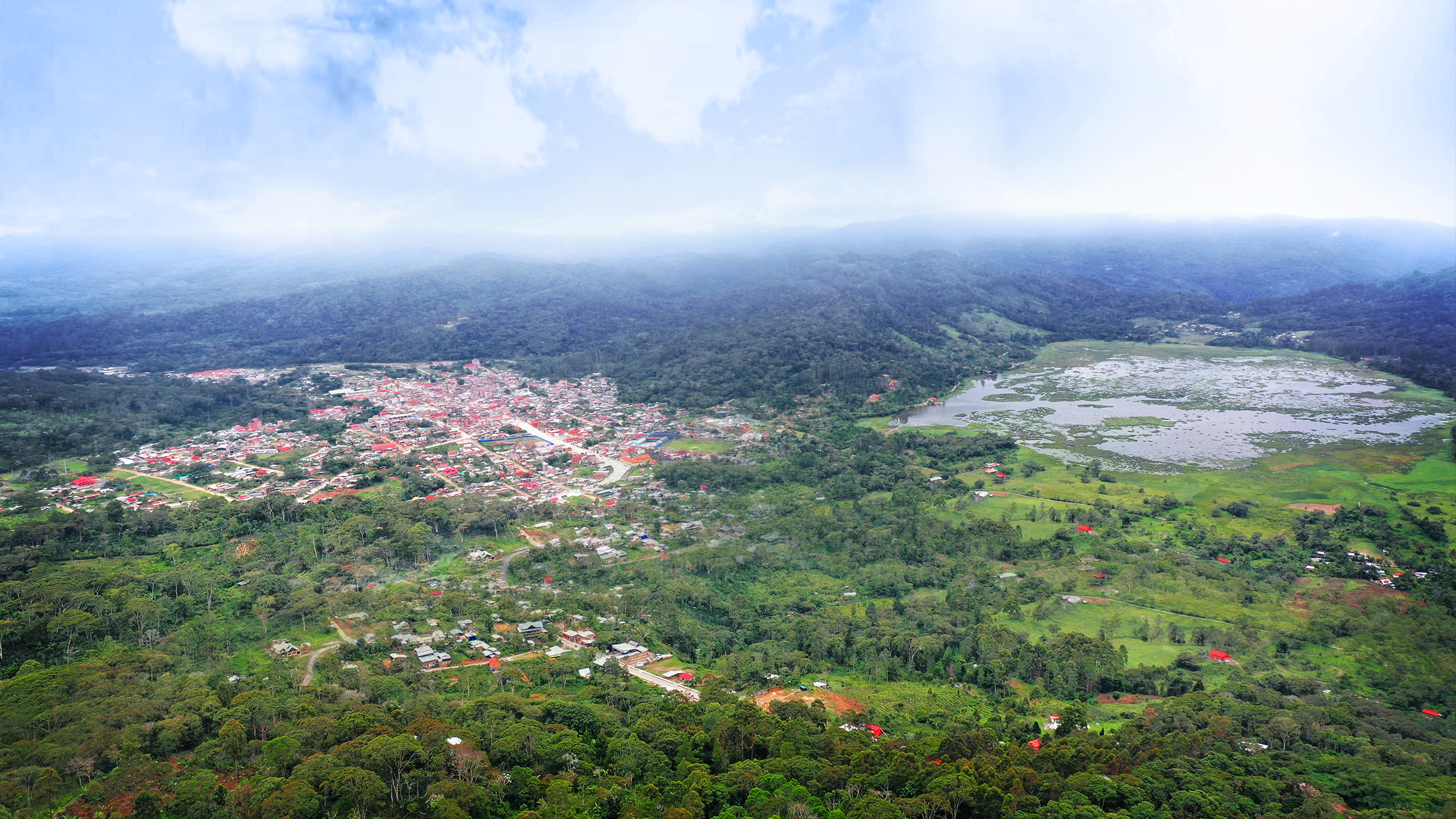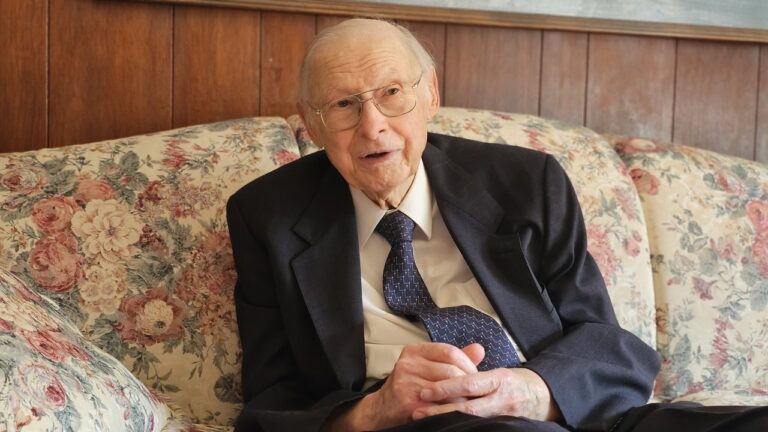The end of World War II and the following communist dictatorship sent hundreds of thousands of Hungarians fleeing to the four corners of the world. Some of them wandered as far as the jungles of Peru. The story of one of those adventurous Magyars, István Vajda or, as he was called in Peru, Esteban Vajda Széchenyi, highlights their struggles and search for a new home, as well as their role as settlers in the internal colonization and modernization of Peru.

European Settlers in the Central Jungle of Peru
Peru’s ‘Central Jungle,’ which lies beyond the ranges of the Andes in the centre of the country, had been the focus of efforts to integrate previously unexplored regions into Peru’s colonial state ever since the Spanish conquest in the 1530s. The area enjoys a pleasant climate: although it is close to the equator, in the Amazon rainforest, it is mainly located in a high-altitude zone, approximately 2,500 metres above sea level. However, until well into the 20th century, there was no other way to get there by land than to cross the easternmost mountain ranges of the Andes, with an elevation gain of more than 3,500 meters, on foot or on mules. In addition to the difficulties of accessing it, the resistance of the Amazonian indigenous people, the Asháninka, also made the colonization of the territory daunting. From the 1560s to the 1740s, there were Franciscan missions in the area, but they were driven out by indigenous peoples in the last decade in a bloody rebellion. The area was not returned to Lima’s control until after the country’s independence. In the 1860s the Asháninka were defeated, and the Peruvian government began experimenting with sending new settlers to populate the jungle.
Curiously, in the late nineteenth and early twentieth centuries, these prospective settlers were found among the Europeans. In these years the European population more than doubled, with the dramatic spike resulting in agricultural labourers emigrating from the Old Continent to all over the world, especially to North America and some colonies in Europe with suitable climates. In South America most of them went to Argentina, but some groups were attracted to Peru, aiming for the Central Jungle, with its temperate climate and readily available lands. These immigrants came mostly from Central and Southern Europe, Italy, Germany, and the Austro–Hungarian Empire. The arrival of these various European groups was a constitutive process for Peruvian society along the eastern slopes of the Andes range. Much farther north, in the 1890s, Croatian settlers refined the first batches of cocaine, then a legal drug ingredient, for the German pharmaceutical company Merck. In other regions, new immigrants introduced much less exotic modernizations and new modes of agriculture.
There were also Hungarians were among these newcomers. There are archival documents about a group of Hungarian settlers, just under a hundred people from the Hungarian Alföld (Great Plain), present in Satipo, one of the small colonies in the Selva, in the 1920s. Like other groups, they were also agrarian settlers, cohabiting with locals and other immigrants.
The 1930s slowed immigration in Peru with the arrival of the global Great Depression, pushing down economic growth, which drained the financial resources available for investments that had attracted and retained immigrants. This closed a chapter in Central European immigration to the jungle, but it did not end it completely. The crises in Central Europe after World War II again prompted many Central Europeans to move to other continents.
How István Vajda Became Esteban Vajda Széchenyi
One of them was István Vajda. Not much is known about his early life, except that he was born in Nagykőrös in 1923 and that he fought as a lieutenant in World War II. He was back to civilian life by the summer of 1944 and planned to work as an assistant actor and playwright, according to contemporary documents, in the autumn. His hopes were shattered when the Soviets reached the Trianon borders of the former Greater Hungary in 1944, and he was recalled to active duty. Like other Hungarians who were aware of Germany’s imminent defeat in late 1944, he defected after the Horthy government was overthrown by the Arrow Crosses, with the support of the occupying Nazis, following the failed attempt of the Horthy government to exit the war. István was possibly captured for a short time by the Soviets after his defection but managed to evade deportation to the Soviet Union and returned to civilian life on 1 March 1945. He joined the Hungarian Social Democratic Party, one of the most prominent centre-left parties at the time.
‘The local chapter of the Social Democratic Party in Nagykőrös was established on 13 January 1945,’ says historian Gyula Tolnai, a researcher at the Mathias Corvinus Collegium and an expert on Nagykőrös’s history. ‘He therefore must have been among the first members of the party in the town.’
While initially, in what we call the ‘transition years’ it seemed that a free and democratic society could be built in post-war Hungary, the Sovietization of political life soon began. Although the Communists, aided by the occupying Soviet army, imposed their power definitively only in 1949, the repression of other political forces began as early as 1945. Young István, so active in public life in 1945, sensed what was happening and soon fled, first emigrating to Italy in 1947. The country became an important hub for Hungarian refugees from mid-1945, with Hungarians fleeing the Red Army were taken to refugee camps by British and American forces who met them during their advance from the west and south. However, Italy could not put them up for long: the country was in ruins, and both the Italian government and the Allied forces were equally reluctant to secure the livelihood of such a large number of refugees. Therefore, they were pressured to leave the host country as quickly as they could.
Peru was a rather faraway emigration destination, but it was one of the few countries that had relaxed its immigration quotas. The South American country allowed the resettlement of more than 10,000 European refugees in February 1948. Thus began the immigration of Hungarians, too, including István Vajda who arrived in Peru in 1948.
Initially, he settled in the coastal region, where he found his life partner, María Isabel Chávez Arana. However, at the end of the 1940s, Peru did not enjoy an abundance of jobs, so István needed to move towards parts of the country that offered better opportunities. Apparently, by accident, he followed the route of other economic migrants from the Central Jungle through the Cordilleras, eventually settling in the small town of Villa Rica. He started to use his name in Peru in the Spanish form of Esteban Vajda Széchenyi, with his surname now also including his mother’s family name, as is customary in Spanish-speaking regions. He also changed the transcription of his maternal surname from Szécsényi to Széchenyi, to emulate the well-known Hungarian historical family name, Széchenyi.

According to family history, he was one of the people who took on the responsibility of the modernization process of the town. He became a teacher, drawing from an impressive schooling that included the knowledge of seven languages. As a well-educated former military man, he played an important role in the city’ history in the 1950s and 1960s. He was an active spokesman for the colony in important regional issues, of which the most crucial at the time were the debates about improving infrastructure, since the first road passable by motorized transport was built in the region only in 1940. While there had been plenty of progress, there was still a lot to be done in the 1950s, too. Peru was living through a period of rising societal tensions, the easing of which was partially the result of investment in the development of essential infrastructure to offer better opportunities and living standards to the population.
István played an important local role in these national processes and successfully lobbied for a new school to be built in the town—this became the Colegio Leopoldo Krause in 1966, the first regional institution that offered education beyond the fourth grade of elementary school. He thus helped address one of the most important issues of contemporary Peru. The highlands and especially the regions that lie along the jungle frontier were in the gravest need not only of infrastructure programmes, but also of schools, as the general lack of education was a major problem that was noted by every Peruvian politician debating the future of the nation. In contrast to the rhetorical debates, István actively helped to bring education to the Central Jungle of Peru. István also lobbied for the new regional motorway built under the presidency of Belaúnde Terry, ‘The Engineer’ as he is remembered in Peru, to have a route better suited to the needs of Villa Rica, but he did not succeed.
Preserving the Hungarian Heritage
His important local role aside, it is also very impressive that he maintained his Hungarian identity throughout his life, living in a region where there was no meaningful Hungarian presence at that time.
István/Esteban died in 1983 and was buried in his beloved Villa Rica. He had six children and twelve grandchildren, and the seventh great-grandchild is expected to be born soon. The whole family prides itself on their Hungarian heritage and the achievements of the Hungarian patriarch of the family.
The author would like to express his gratitude to the family of Esteban Vajda Széchenyi, who made sources and personal insights on the life of Esteban available to him and the public, as well as to the Hungarian Ministry of Foreign Affairs and Trade that made the Peruvian field research possible through the Klebelsberg Kunó scholarship.
Read more about Hungarians in South America:








